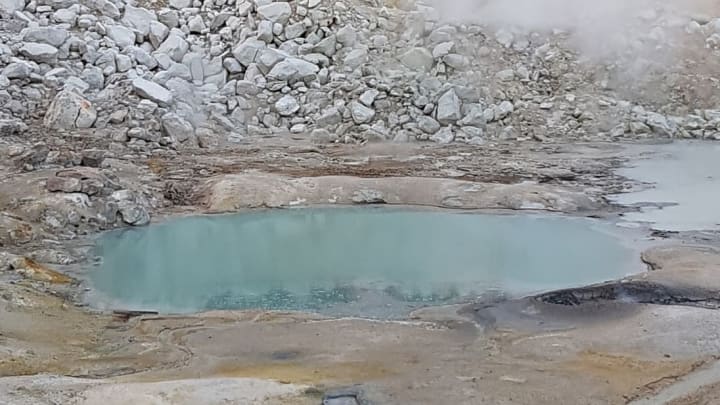A new study argues that meteorites that landed in volcanic pools of water 4 billion years ago were key to jump-starting life on Earth—a theory proposed by Charles Darwin more than 140 years ago. New analysis from McMaster University in Canada and the Max Planck Institute for Astronomy suggests that meteorites that landed in shallow, stagnant pools of water (or "warm little ponds") on Earth brought the organic materials necessary to create life billions of years ago.
The research, published in the journal PNAS, is based on comprehensive modeling of astronomic, geological, chemical, and biological conditions on Earth as early as 4.5 billion years ago, looking at how RNA could have been formed in dry, intermediate, and wet conditions.
The "warm little pond" hypothesis—a phrase taken from a 1871 letter Darwin wrote to his friend Joseph Hooker—has been studied in labs since the 1950s, when University of Chicago researchers formed amino acids by introducing electric shocks into a flask of water and gases (meant to simulate early Earth's atmosphere).
The hypothesis isn't universally accepted; another candidate for life on Earth could be found in hydrothermal vents at the bottom of the ocean. But some previous studies have supported the warm little pond hypothesis. Still, "no one's actually run the calculation before," lead author Ben Pearce said in a statement. "It's pretty exciting."
The idea is that meteorites that landed in these "warm little ponds" delivered protein building blocks called nucleobases that were necessary to first form RNA, one of the essential building blocks for all known life. Warm little ponds may have created just the right conditions for this to happen. They have wet and dry cycles, which have been shown to boost the process of nucleotides forming chains of RNA. The ponds would periodically dry out, leaving behind a high concentration of minerals, then fill back up again, leading to longer and longer polymers. These long strands of RNA would later begin to self-replicate—the first life on Earth.
The study concludes that based on these models, RNA polymers would have shown up early in Earth's history, some time before 4.17 billion years ago—only a few hundred million years after liquid water first formed on the planet's surface.
The results shouldn't be considered foolproof just yet. This study is based on mathematical models, which aren't quite enough to prove the hypothesis. "Now it's the experimentalists' turn to find out how life could indeed have emerged under these very specific early conditions," co-author Dmitry Semenov said in the statement.
